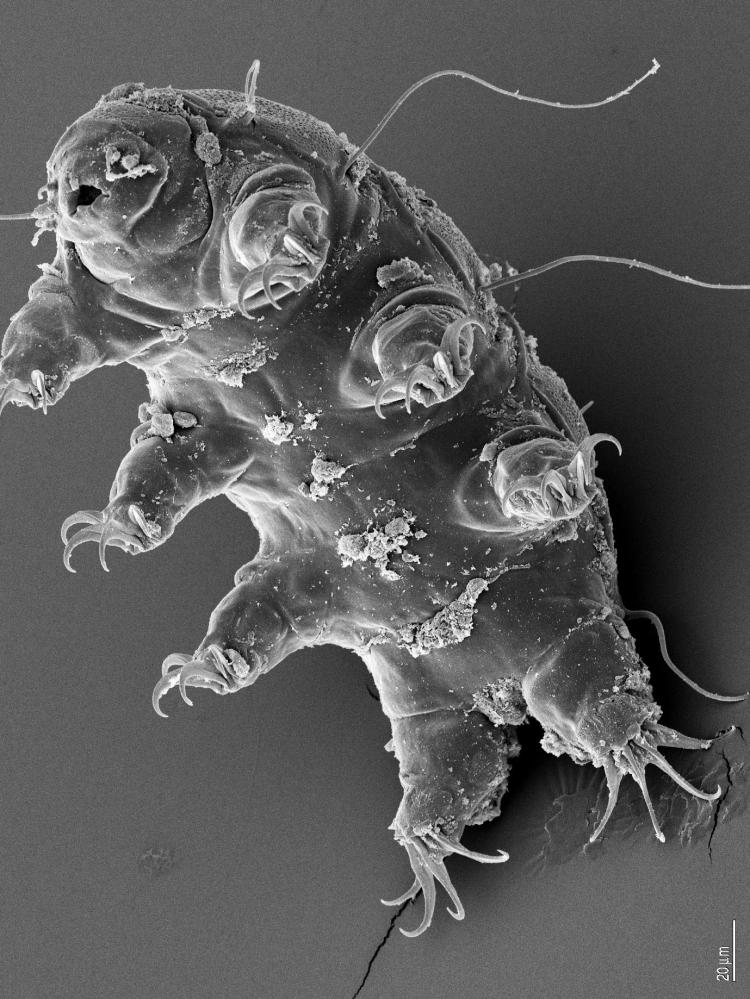
The eight-legged tardigrade or water bear may seem insignificantly small. In fact, it is microscopic. Yet it is capable of thriving at death’s door under near impossible conditions. It is the penultimate extremophile.
Its official name, tardigrade, refers to the “bear’s” slow, lumbering movements. Its feeding habits earn it the nickname, moss piglet. In fact, water bears are harvested for research purposes from moss-covered tree stumps.
Special Features of the Water Bear
Water bears can survive temperatures near absolute zero.¹ Why doesn’t the water in its body form destructive ice crystals? It seems to be due to the presence of the disaccharide sugar trehalose.
Trehalose is found in a number of lower life forms. It possesses unique properties. It is stable in the presence of acid. It can be converted by an organism into the simple monosaccharide sugar glucose (food). It enables anhydrobiosis.
Anhydrobiosis is the ability of the water bear to lose moisture, to dehydrate or desiccate. Glucose reverts to the disaccharide. The water remaining is interspersed within the trehalose molecules in small, H-bonded units.
The freezing water and trehalose gel enables the water bear to become rigid, retaining its overall shape. While frozen, the water bear remains in a kind of suspended animation. It revitalizes when temperatures return to normal.
But There’s More
Water bears can also withstand severe heat well above water’s boiling point. Why doesn’t steam form within its body, bursting the water bear? Is that due to trehalose, as well? Also, how does the water bear survive extreme pressure, even the vacuum of space?
Some have speculated water bears could travel throughout the universe. This is unlikely, since ultraviolet light kills even this extremophile.
OK. We’ve saved the most amazing survival characteristic of water bears for last. Shriveled up (desiccated) water bears can withstand incredible irradiation. In fact, they survive a thousand times as much as a human can endure.
1 Absolute zero is equal to –273.15o Fahrenheit.
Note: You might also enjoy The Stentor Trumpet Animalcule
References:
← Back to Classic Science
← Home